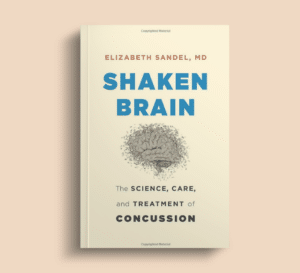Generosity: Neuroscience and the Golden Rule

Summer Allen of the Greater Good Science Center at the University of California, Berkeley writes in The Science of Generosity, a white paper prepared for of the John Templeton Foundation, that generosity is one of a collection of prosocial human behaviors that also include empathy, compassion, and humility. Generosity may be displayed in the form of time spent as a volunteer for organizations, efforts to help others without any expectation of remuneration or reciprocation, or financial gifts to an individual or an organization.
Other non-human primates and even other animals demonstrate the ability to help others of their species within species-specific environments. Children appear to exhibit a drive to help others and demonstrate generosity at very young ages, although human behaviors become more complex as we age. Various socio-economic and cultural factors—religion, gender, age, friendship networks, and parental values and behaviors—can influence our capacity or inclination to be generous.
Perhaps there is a normal curve for generosity within populations, as there may be for other traits such as greed (see my previous post)?
Philanthropy
Who Gives the Most?
The word “philanthropy” comes from two Greek words: philos (love) and anthropos (humanity and literally means “love of humanity.” The modern meaning of philanthropy encompasses acts of charity or contributions utilizing human resources (money or effort) to improve the lives of others. But wealth by itself does not translate to financial generosity. While wealthy people as a group donate a greater amount of their riches, most donations come from average US citizens of moderate income, and those donations represent a greater percentage of the donor’s overall financial resources.
According to the Philanthropy Roundtable, 60% of US households donate, and these households donate between $2,000 and $3,000 annually. Americans are bigger donors than citizens of European countries and Canada. In state-to-state comparisons, the statistics show that the most generous Americans are not from high-income, urban, and liberal states such as California or Massachusetts, but rather from states with moderate income averages and more rural, conservative, and religious populations. The reasons for this disparity in giving are complicated and not fully understood, but one is that the largest percentage of monetary donations go to faith organizations. Fewer statistics and studies analyze volunteering, but given the number of public and private organizations in the US, many people offer time and energy without remuneration, from helping out at their children’s schools to working at fundraisers for their local food bank.
Is Generosity Contagious?
Generosity is not the opposite of greed, as many believe, but some in the ultra-rich category do not practice philanthropy in any major way. On the other hand, billionaire Warren Buffett, founder and former CEO of Berkshire Hathaway, has given most of his riches to charity over nearly nine decades of his life. Distinguished professor of finance at Rutgers University, Newark, John Longo calls Buffett a model philanthropist. With fellow philanthropists Melinda French Gates and Bill Gates, Buffett set up The Giving Pledge for billionaires who commit to donating at least half of their wealth to charity. At the time of his retirement in 2025, Buffett had pledged more than 99% of his wealth to philanthropy during “my lifetime or at death.” Maybe generosity is contagious. Recently, Bill Gates pledged to double his giving over the next two decades.
Melinda Gates’ statement on the Giving Pledge website clarifies what she defines as her “standard for generosity”:
“It’s important to acknowledge that giving away money your family will never need is not an especially noble act. There’s no question in my mind that the real standard for generosity is set by the people who give even when it means going without. That’s why, as part of this pledge, I commit to doing more than writing checks. I also commit my time, energy, and efforts to the work of fighting poverty and advancing equality—for women and girls and other marginalized groups—in the United States and around the world. My giving will continue to focus on the people for whom the barriers to equality are highest.”
The Neuroscience of Generosity
Oxytocin Impacts Prosocial Behaviors
Director of the Center for Neuroeconomics Studies at Claremont Graduate University Paul J. Zak studies generosity and social interactions. Zak considers oxytocin (OT) “the neurologic substrate for the Golden Rule.” OT is a hormone and neuropeptide, synthesized in the hypothalamus, that plays a role in childbirth (cervical dilation and uterine contractions), lactation, and maternal care and bonding. (This is why studies that involve giving OT to subjects have been done primarily with male subjects.) OT also has effects on prosocial behaviors. Zak and his colleagues discovered that, after a stimulus, changes in OT in the blood reflect changes in the brain’s OT.
Zak’s research team was the first to discover that a person’s brain synthesizes OT when the person trusts another, and that OT motivates reciprocation. A “trustworthy” signal occurs even between strangers and without the need for face-to-face interactions. In one study, male students given a nasal spray of OT showed significantly more trust toward others in an investment game and transferred more money to others than the control group. In a subsequent study, the researchers found that while a dose of OT did not increase the percentage of people who chose to donate part of their earnings (from a lab experiment), it did increase the amount of the donations among those who decided to give to a charity.
In a study by psychologist Pei-Ying Lin and colleagues, subjects given OT before watching a series of public service announcements (PSAs) donated more money, donated to more causes, and reported more concern for the people represented in the PSAs. In additional studies, Zak and colleagues found that stories that transport a person into the narrative and have psychological effects such as concern for the characters (emotional resonance) predict post-story donations and affect behavior after the story has ended. OT release is correlated with empathy, regardless of whether the beneficiary is a stranger. Zak concludes that “To the brain, good stories are good stories, whether first-person or third-person, on topics happy or sad, as long as they get us to care about their characters.”
Generosity Activates Dopamine Reward Pathways
OT is not the only chemical that plays a role in prosocial behaviors. In a double-blind within-subjects design study, Zak and colleagues showed that men with artificially raised testosterone were 27% less generous (more selfish) with their money with “distant others” (strangers) compared to these same men on placebo. The study implicates the temporoparietal junction (TMJ) and subcortical regions involved in reward processing. Generosity also activates the same dopamine reward pathways that are activated by sex and food. It is not clear how the dopamine-based reward system and OT-based systems interact to affect generosity in real-life situations, however.
Are Organ Donor Brains Different?
Most humans are much less generous toward strangers than toward those they know, a bias called “social discounting.” Organ donors, in one study, exhibited greater altruism and showed greatly reduced social discounting compared with others who did not donate organs. Such individuals may be able to overcome selfishness more than other people; this capacity has been linked to brain activity in the TMJ as well as to the amygdala and anterior cingulate cortex, limbic areas involved in social decision-making and valuing the welfare of others.
In a recent review article in the journal Molecular Psychiatry, Chinese researchers Shuxia Yao and Keith Kendrick emphasize that it is still unclear how OT acts, although there are now many studies showing that it can influence cognitive, emotional, and social functions promoting “survival, security, and sociability.” They stress the importance of both its central and peripheral effects (involving the vagus nerve): “…OT acting via its extensive central or peripheral receptors primarily influences behavior indirectly through neuromodulatory interactions with classical transmitters and other peptides which themselves can independently influence behavior.” They conclude that OT helps to promote “interpersonal social understanding, attraction, bonds, social group cohesion and conformity, moral emotions, and altruistic punishment.”
Mental Health Benefits of Generosity
There is considerable evidence that generosity can be good for your mental health. Volunteering has been shown to result in increases in happiness. There is evidence that generosity stimulates self-esteem, happiness, and quality of life as well as improves relationships. For example, in one fMRI study by psychologists Soyoung Q. Park and Sabrina Strang, participants in an experimental group made more generous choices in an independent decision-making task (publicly pledging future generosity) and had stronger increases in self-reported happiness. The TMJ was engaged more in the experimental group, and changes in happiness directly related to ventral striatal activity during generous decisions. Although greed doesn’t seem to benefit society or be associated with mental well-being or benefit society, generosity might be good for both individual humans and for our planet.
US Government Generosity Gone?
Recent federal funding cuts for charitable organizations, now in the billions of dollars, leave many in the lurch. There are approximately 1.48 million non-profit groups in the US, and about 27% receive federal grants. Candid reports that about a third of non-profits that are government grantees rely on these grants for more than 50% of their total revenue. Other academic and research institutions, and federal agencies, have also lost or will lose federal funding in the near future.
Social sciences and neuroscience shed light on the topic of generosity and offer hope that these findings may translate into real societal benefits. Meanwhile, when countries and individuals become less generous, as we recognize in recent developments in the US, people will suffer and outcomes become unclear.
Will Americans and private foundations be able to respond with enough generosity to keep the doors open? That remains to be seen.
You Might Also Like
The Human Brain: Highly Evolved or Doomed to Failure?
Protecting our planet so it can continue to sustain life requires a comprehensive and collective vision, with clear strategies and tactics. Richer nations have the resources to do the most to prevent catastrophe, as well as the greatest responsibility for causing it, but are taking little or no action. What is it about the highly evolved human brain that is not capable of saving our planet from extinction? Greed and materialism are a big part of the problem but so are other destructive human traits and behaviors. Can we foster constructive traits and behaviors to save our world?
Dr. Sandel: 2025 Plans
Here’s an update on Dr. Sandel’s professional plans for 2025.
Keep up to date
Get updates on the latest in concussion, brain health, and science-related tools from Dr. Elizabeth Sandel, M.D.
By clicking SIGN UP, you agree to receive emails from Dr. Sandel and agree to our terms of use and privacy policy.
Get the book!


